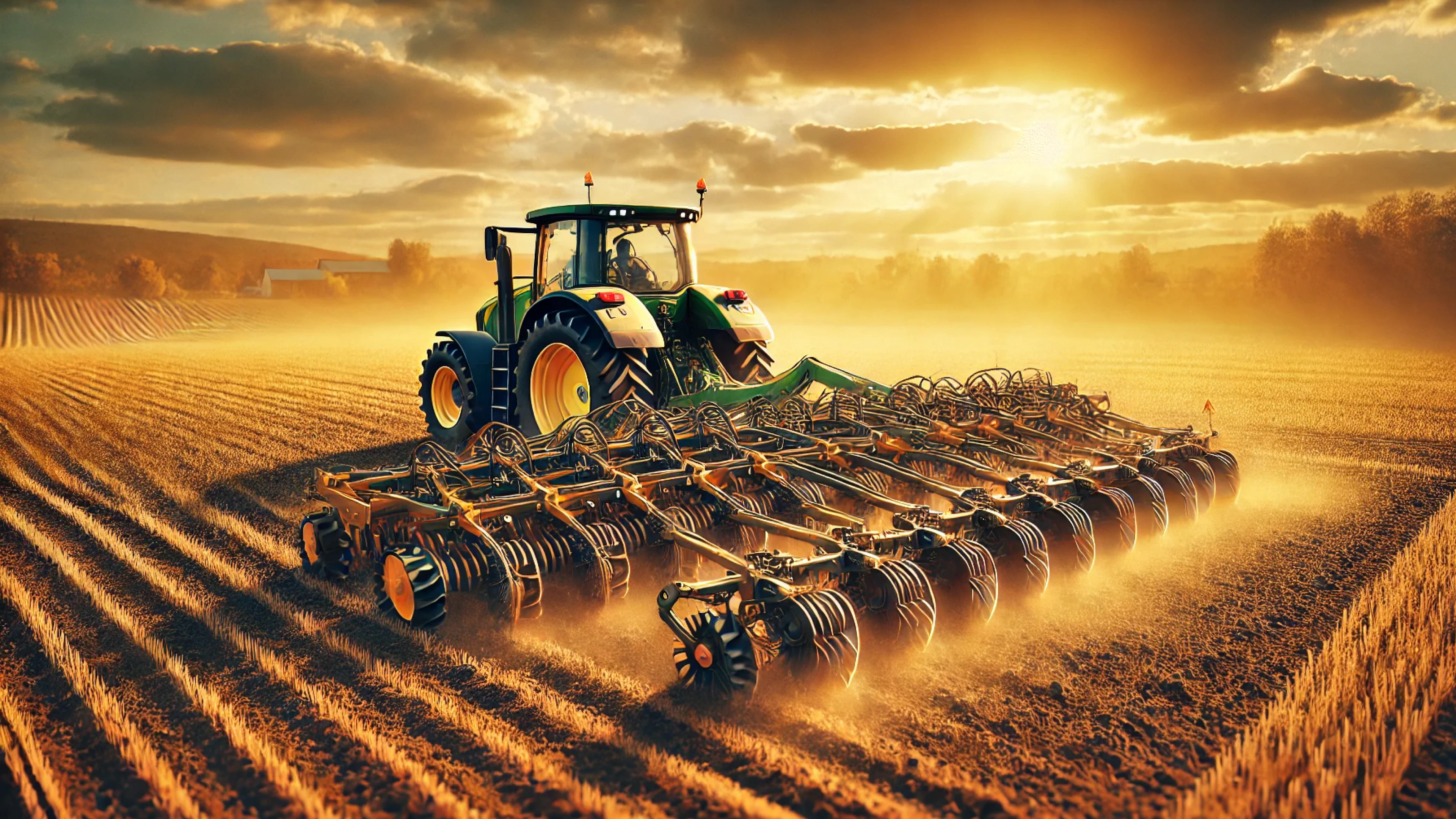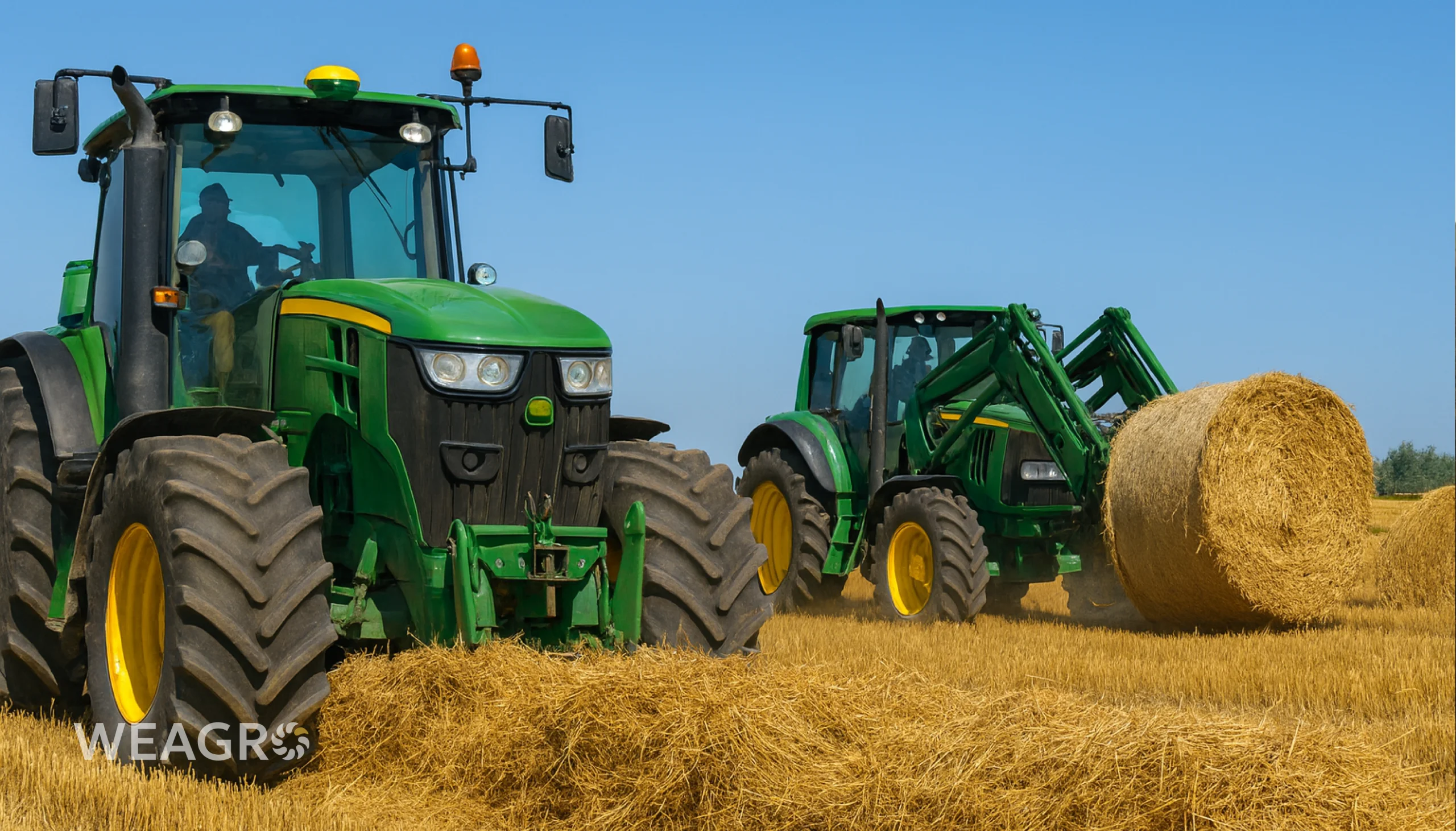To ease labor-intensive tasks relevant at the pre-sowing stage, a cultivator is necessary – it’s an indispensable tool in agriculture. There is a wide variety of units, each with specific characteristics, features, and capabilities. An overview of key parameters will help acquire a versatile model capable of significantly increasing productivity and work quality. And following care and maintenance recommendations is the key to long and uninterrupted operation of the device.
What is a Cultivator
Surface and deep loosening, weed destruction, soil preparation for sowing, fertilizer application: a cultivator is an opportunity to automate these tasks and abandon manual labor. The most common models are equipped with the following elements:
- arrow-shaped flat-cutting blades – for surface loosening of the topsoil and weed removal;
- chisel-like loosening blades – penetrate to a depth of up to 16 cm, breaking dense layers and improving soil aeration and water permeability;
- reversible loosening blades – suitable for attachment to different types of stands, allowing both inter-row and full cultivation.
What is a cultivator? It’s a versatile unit that is indispensable in pre-sowing field preparation. And the use of different components allows adapting the structure to specific tasks and conditions.

Read also: Soil: What It Is, Types, and Its Fertility
Types of Cultivators
Agricultural machines differ in a number of characteristics, including size, power, and purpose. Light models, weighing up to 30 kg, are optimal for areas up to 12 acres, while heavy ones, with 9 hp power, can handle plots over 50 acres. Depending on the characteristics, the following models are distinguished:
- Fallow cultivators – used at the stage of preparation for future sowing. Equipped with loosening tines that can deeply penetrate the soil, breaking compacted layers. Advantages:
- increase water permeability;
- improve structure;
- destroy perennial weeds.
- Row crop cultivators – perform inter-row cultivation of crops, and are also relevant for fertilizer application between rows of growing crops without damaging them. This allows removing weedy grasses, saturating the soil, and performing hilling. Features:
- increase aeration;
- promote even distribution of fertilizers;
- compact and functional.
- Universal cultivators – successfully combine the advantages of fallow and row crop models, allowing their use for the widest range of agricultural tasks. Equipped with various working elements that can be adjusted as needed. They cost more than basic solutions but win due to such advantages:
- possibility of use for different soil types;
- performance of both continuous and inter-row cultivation;
- wide range of available options.
- Plant feeders – these cultivators are also known as fertilizer applicators, which corresponds to their purpose. Used for simultaneous field cultivation and application of liquid or granular fertilizers near the root system of plants. Advantages of use:
- precise distribution of nutrients;
- improved nutrition;
- increased yield.
Models also differ by mounting method: mounted and trailed. The latter are distinguished by significant dimensions and the presence of their own wheel base. By engine type, there are the following types of cultivators:
- gasoline – mobile, powerful, and designed for long-term operation;
- diesel – operate at low revolutions and withstand significant loads well;
- electric – light, with reduced noise levels, somewhat inferior to analogues due to dependence on network connection, but ideal for work in greenhouses.
The choice depends on the conditions of further operation and the needs of the farm.

How a Cultivator Works
The main operating principle of this type of device is the mechanical impact on the soil for its loosening, leveling, and improvement of certain properties. The construction consists of a frame and working organs, which determine the list of actions the unit can perform. How each variety of cultivator works:
- fallow cultivators – penetrate to a significant depth, cutting and lifting dense layers to prepare for subsequent sowing;
- row crop cultivators – tines and fingers work between plant rows, cutting weeds and loosening the top layer, and their shape allows working at shallow depths without damaging the root system of plants;
- universal cultivators – can be equipped with various tools, allowing to choose the desired depth of soil penetration;
- plant feeders – equipped with dosing systems and systems for precise application, and loosening of soil layers improves nutrient intake.
Understanding the operating principles of different variations of agricultural equipment helps to select the optimal model. And with the help of the online service
Additional Functions of Cultivators
The list of capabilities of the unit can be significantly expanded by purchasing additional attachments that allow modifying the standard unit. How a cultivator works with additional functions:
- plow – plows the earth, turning over layers;
- hiller – forms ridges that protect roots from temperature fluctuations, retain moisture, and also activate plant growth and development;
- ripper – destroys compacted layers for better water and air penetration, as well as preventing soil erosion.
You can select attachments for digging potato tubers, mowing weeds and small shrubs, as well as systems for quick distribution of liquid fertilizers.
Read also: Soil erosion: causes, types, control measures
How to Choose a Cultivator for your Farm
To ensure the purchase meets expectations, reducing the amount of time and effort spent on plot cultivation, it’s useful to follow these criteria when choosing:
- Type. Electric – environmentally friendly, silent, but require access to the network. Gasoline – have high power and autonomy, which is convenient for medium-sized plots. Diesel – actively used in large farms due to the combination of productivity and economy.
- Power. Light and sandy soils require less power than clay and heavy ones. If work on virgin or dense soils is expected, it’s better to use types of cultivators with at least 5 hp.
- Working width. The coverage width affects productivity: the larger this indicator, the higher the processing speed. For greenhouses – up to 30 cm, for large fields – at least 70 cm.
- Processing depth. Adjustable parameters allow adapting the unit to different tasks. Surface ones immerse 5-10 cm, which is relevant for carrots, tomatoes. For deep loosening – 15-25 cm.
- Design features. V-belt coupling requires constant maintenance, which includes checking tension, adjustment, and belt replacement. The disc version is much more convenient and practical.
7 Tips for Using and Caring for a Cultivator
To prevent premature wear of main parts, and most importantly – to extend the service life of the unit, it’s useful to follow these rules:
- When using gasoline and diesel types of cultivators in work, always drain the fuel after completing work – sediment and condensate can cause the unit to fail.
- Regularly clean air filters and the cooling system to avoid engine overheating.
- After use, free the frame and working parts from grass and soil.
- Lubricate moving parts: bearings, gears, and hinges.
- Replace damaged elements when signs of wear appear;
- Perform sharpening or replacement of working organs as needed.
After each use, perform a visual inspection to detect possible breakages or loose fastenings. A cultivator is a faithful helper during the season, which is not used in winter. For the storage period, it’s worth choosing a dry place protected from moisture, and if possible, use a cover.









